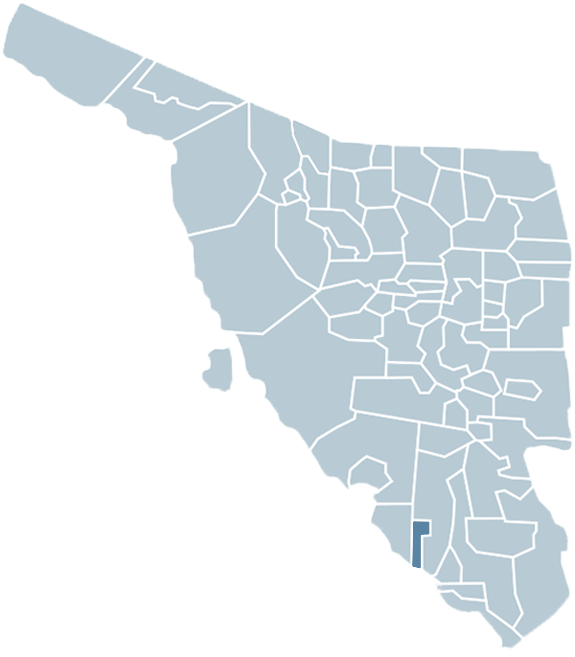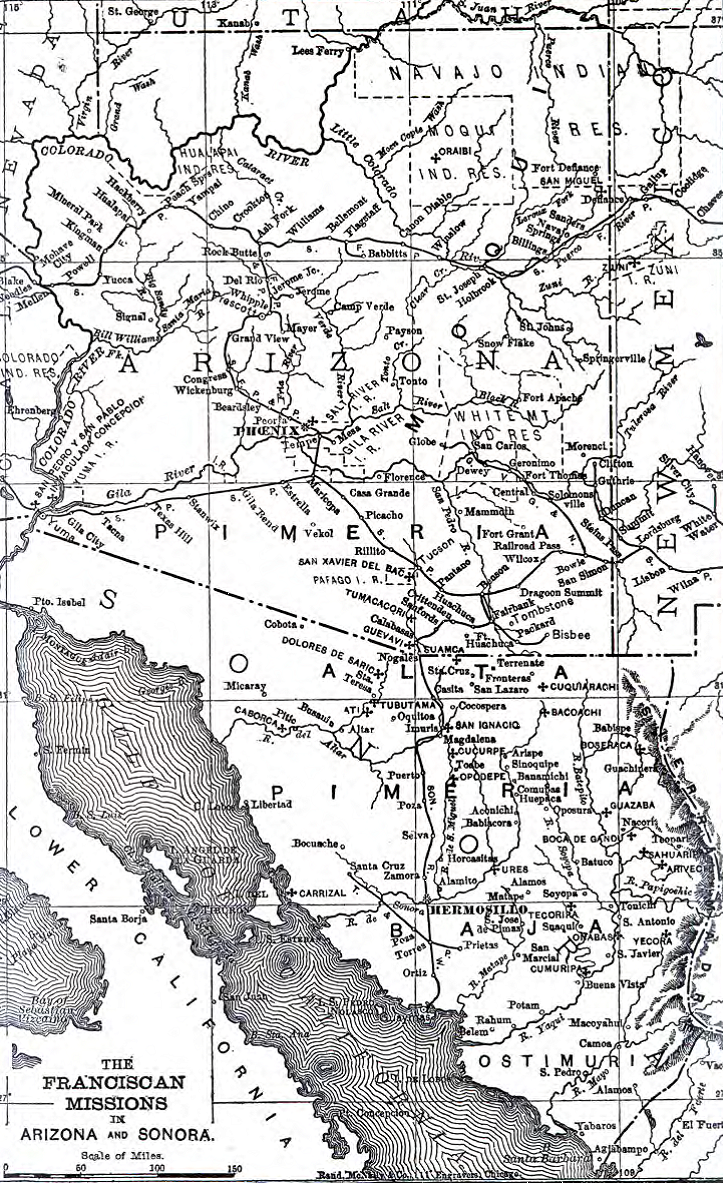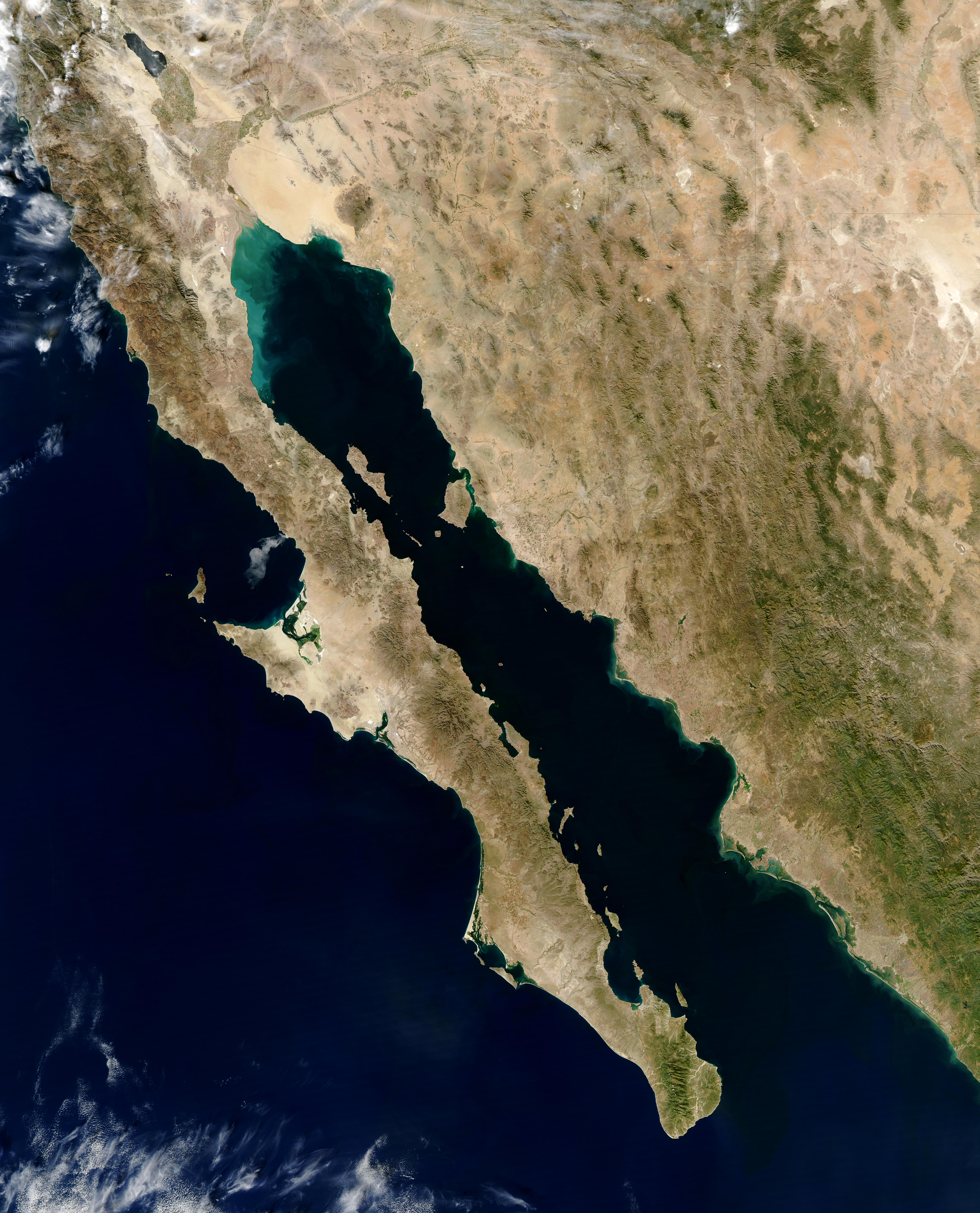|
Bácum Municipality
Bácum is a municipality of southwestern Sonora, in northwestern Mexico. The population was 23,151 in 2020https://www.inegi.org.mx/programas/ccpv/2020/. Geography The municipality of Bácum is located in one of the two valleys of the Yaqui River. The area of the municipality is 1,409.7 km2 (544.3 mi2) It is bounded by the municipalities of Cajeme in the east and Guaymas in the west — and the Gulf of California in the south. ;Municipal seat The municipal seat is the town of Bácum. The municipality lies next to the large urban center of Ciudad Obregón in Cajeme. Yaqui Indians The indigenous community is very large, with more than 9,000 residents identified as Yaqui in the 2000 censu Economy The municipality's main economic activity is intensive agriculture, with more than 300 square kilometers under irrigation by canal. The Yaqui River's water is used for irrigation in a system of canals. The main crops are wheat, corn, soybeans, barley, cotton, and garden vegeta ... [...More Info...] [...Related Items...] OR: [Wikipedia] [Google] [Baidu] |
Municipalities Of Mexico
Municipalities () are the administrative divisions under the List of states of Mexico, states of Mexico according to the Constitution of Mexico, constitution. Municipalities are considered as the second-level administrative divisions by the Federal government of Mexico, federal government. However, some state regulations have designed intrastate regions to administer their own municipalities. Municipalities are further divided into Localities of Mexico, localities in the structural hierarchy of administrative divisions of Mexico. As of December 2024, there are 2,462 municipalities in Mexico. In Mexico, municipalities should not be confused with cities (). Cities are Localities of Mexico, locality-level divisions that are administered by the municipality. Although some List of cities in Mexico, larger cities are consolidated with its own municipality and form a single level of governance. In addition, the 16 Boroughs of Mexico City, boroughs of Mexico City are considered municipali ... [...More Info...] [...Related Items...] OR: [Wikipedia] [Google] [Baidu] |
Guaymas
Guaymas () is a city in Guaymas Municipality, in the southwest part of the List of states of Mexico, state of Sonora, in northwestern Mexico. The city is south of the state capital of Hermosillo, and from the Mexico – United States border, U.S. border. The municipality's formal name is Guaymas de Zaragoza and the city's formal name is the Heroica Ciudad de Guaymas. The city proper is mostly an industrial port and is the principal port for the state of Sonora. The city has a well-attended annual carnival, which has been held since 1888. Nearby, San Carlos Nuevo Guaymas, San Carlos and its beaches are major tourist attractions. History Before the arrival of the Europeans, the bay of Guaymas was dominated by the Guaymas, Seri people, Seri and Yaqui people, Yaqui tribes. In 1539, two Spanish ships, the ''Santa Águeda'' and the ''Trinidad'', arrived in Guaymas Bay. They were commanded by Francisco de Ulloa, who called the area "the port of ports." Some small Society of Jesus, J ... [...More Info...] [...Related Items...] OR: [Wikipedia] [Google] [Baidu] |
Spanish Missions In The Sonoran Desert
The Spanish missions in the Sonoran Desert () are a series of Jesuit Catholic religious outposts established by the Spain, Spanish Roman Catholic, Catholic Society of Jesus, Jesuits and other orders for religious conversions of the Pima people, Pima and Tohono O'odham Indigenous peoples of the Americas, indigenous peoples residing in the Sonoran Desert. An added goal was giving Spain a Spanish colonization of the Americas, colonial presence in their frontier territory of the Sonora y Sinaloa, Sonora y Sinaloa Province in the Viceroyalty of New Spain, and relocating by Indian Reductions (''Reducciones de Indios'') settlements and encomiendas for agricultural, ranching, and mining labor. Geography and history The missions are in an area of the Sonoran Desert, then called "Pimería Alta de Sonora y Sinaloa" (Upper Pima of Sonora and Sinaloa), now divided between the Mexican state of Sonora and the U.S. state of Arizona. Jesuits in missions in Northwestern Mexico wrote reports that ... [...More Info...] [...Related Items...] OR: [Wikipedia] [Google] [Baidu] |
Bataconcica
Bataconcica (from the Yaqui language, Yaqui ''Ba'atakomsika ''''Where the water came down'), also known as Museo Chopocuni, is a Locality (settlement), locality in Bácum Municipality located in the southern part of the Mexican state of Sonora in the Yaqui Valley area. The locality is the sixth most populous in the municipality, as according to the 2020 Census by the Instituto Nacional de Estadística y Geografía (INEGI), Bataconcica has a total of 573 inhabitants. A large number of Yaqui indigenous people reside in Bataconcica. Geography Bataconcica is located at coordinates 27°33'33" north latitude and 110°07'46" west longitude of the Prime Meridian, at an average elevation of 24 meters above sea level, situated on the flat areas of the Yaqui Valley. Its inhabited area covers an area of 0.3 square kilometers. Demographics Educational institutions In 2005, there were three registered educational centers in the locality: * The indigenous kindergarten "Bataconcica," publi ... [...More Info...] [...Related Items...] OR: [Wikipedia] [Google] [Baidu] |
Irrigation
Irrigation (also referred to as watering of plants) is the practice of applying controlled amounts of water to land to help grow crops, landscape plants, and lawns. Irrigation has been a key aspect of agriculture for over 5,000 years and has been developed by many cultures around the world. Irrigation helps to grow crops, maintain landscapes, and revegetation, revegetate disturbed soils in dry areas and during times of below-average rainfall. In addition to these uses, irrigation is also employed to protect crops from frost, suppress weed growth in grain fields, and prevent soil consolidation. It is also used to cool livestock, reduce dust, dispose of sewage, and support mining operations. Drainage, which involves the removal of surface and sub-surface water from a given location, is often studied in conjunction with irrigation. There are several methods of irrigation that differ in how water is supplied to plants. Surface irrigation, also known as gravity irrigation, is the olde ... [...More Info...] [...Related Items...] OR: [Wikipedia] [Google] [Baidu] |
Yaqui People
The Yaqui, Hiaki, or Yoeme, are an Indigenous people of Mexico and Native American tribe, who speak the Yaqui language, a Uto-Aztecan language. Their primary homelands are in Río Yaqui valley in the northwestern Mexican state of Sonora. Today, there are eight Yaqui Pueblos in Sonora. Some Yaqui fled state violence to settle in Arizona. They formed the Pascua Yaqui Tribe of Arizona, based in Tucson, Arizona, which is the only federally recognized Yaqui tribe in the United States. Many Yaqui in Mexico live on reserved land in the state of Sonora. Others live in Sinaloa and other regions, forming neighborhoods in various cities. Individual Yaqui and people of Yaqui descent live elsewhere in Mexico and the United States. Language The Yaqui language, or Yoem Noki, belongs to the Uto-Aztecan language family. Yaqui speak a Cahitan language, a group of about 10 mutually intelligible languages formerly spoken in much of the states of Sonora and Sinaloa. Most of the Cahitan la ... [...More Info...] [...Related Items...] OR: [Wikipedia] [Google] [Baidu] |
Indigenous Peoples Of The Americas
In the Americas, Indigenous peoples comprise the two continents' pre-Columbian inhabitants, as well as the ethnic groups that identify with them in the 15th century, as well as the ethnic groups that identify with the pre-Columbian population of the Americas as such. These populations exhibit significant diversity; some Indigenous peoples were historically hunter-gatherers, while others practiced agriculture and aquaculture. Various Indigenous societies developed complex social structures, including pre-contact monumental architecture, organized city, cities, city-states, chiefdoms, state (polity), states, monarchy, kingdoms, republics, confederation, confederacies, and empires. These societies possessed varying levels of knowledge in fields such as Pre-Columbian engineering in the Americas, engineering, Pre-Columbian architecture, architecture, mathematics, astronomy, History of writing, writing, physics, medicine, Pre-Columbian agriculture, agriculture, irrigation, geology, minin ... [...More Info...] [...Related Items...] OR: [Wikipedia] [Google] [Baidu] |
Ciudad Obregón
Ciudad Obregón is a city in southern Sonora. It is the state's second largest city after Hermosillo and serves as the municipal seat of Cajeme. As of 2020, the city has a population of 436,484. Ciudad Obregón is south of the country's U.S.–Mexico border, northern border. History The city, previously named Cajeme, takes its name from the revolutionary Álvaro Obregón, a native of nearby Huatabampo, Sonora. Álvaro Obregón became president of Mexico after the Revolution and initiated an "agricultural revolution" in the Yaqui Valley, introducing modern agricultural techniques and making this valley one of the most prosperous agricultural regions in the country. Renowned US agronomist Norman Borlaug, the architect of the "Green Revolution" worked here after successful developments in increasing the resistance of wheat. For his efforts, he was later awarded the Nobel Prize. The origins of this city date back to the year 1906 when the company's rail track South Pacific Railw ... [...More Info...] [...Related Items...] OR: [Wikipedia] [Google] [Baidu] |
Gulf Of California
The Gulf of California (), also known as the Sea of Cortés (''Mar de Cortés'') or Sea of Cortez, or less commonly as the Vermilion Sea (''Mar Vermejo''), is a marginal sea of the Pacific Ocean that separates the Baja California peninsula from the Mexico, Mexican mainland. It is bordered by the states of Baja California, Baja California Sur, Sonora, and Sinaloa with a coastline of approximately . Rivers that flow into the Gulf of California include the Colorado River, Colorado, Fuerte River, Fuerte, Mayo River (Mexico), Mayo, Sinaloa River, Sinaloa, Sonora River, Sonora, and the Yaqui River, Yaqui. The surface of the gulf is about . Maximum depths exceed because of the complex geology, linked to plate tectonics. The gulf is thought to be one of the most diverse seas on Earth and is home to more than 5,000 species of micro-invertebrates. Parts of the Gulf of California are a UNESCO World Heritage Site. Geography History The marine expeditions of Fortún Ximénez, Hernán Cort� ... [...More Info...] [...Related Items...] OR: [Wikipedia] [Google] [Baidu] |
Cajeme
Cajeme is one of the 72 Municipalities of Mexico, municipalities of the northwestern List of states of Mexico, Mexican state of Sonora. It is named after Cajemé, a Yaqui people, Yaqui leader. The municipality has an area of 3,312.05 km2 (1,278.79 sq mi) and with a population of 436,484 inhabitants as of 2020. The municipal seat is at Ciudad Obregón. History Yaqui people, Yaqui tribes settled in the region at approximately 1100 and in 1533 had the first contact with the Spain, Spanish conquistadors, when Diego de Guzmán arrived at the Yaqui region. The Yaquis defeated the Spanish army. In the 17th century Society of Jesus, Jesuit Missionary, missionaries visited the zone to evangelism, evangelize the Yaqui people, Yaqui natives in 1617. In 1619, one of the missionaries, Martín Burgencio, founded Mission San Francisco Buenavista as a of Mission San Francisco Xavier de Cumuripa. In 1715 El Realito was founded, which is located in the northern region of the current municip ... [...More Info...] [...Related Items...] OR: [Wikipedia] [Google] [Baidu] |
Administrative Divisions Of Mexico
Mexico is a federal republic composed of 32 federative entities (): 31 states and Mexico City. According to the Constitution of Mexico, the states of the federation are free and sovereignty, sovereign in all matters concerning their internal affairs. Since 2016, Mexico City was made a fully autonomous entity on par with the states. Each state federative entity has its own congress and constitution. Overview The current structural hierarchy of Mexican administrative divisions are outlined by Constitution of Mexico as well as the constitutions and laws of federative entities. The laws together established the following levels of administrative divisions. The levels in bold are those regulated by the federal constitution. * List of states of Mexico, State () ** Intrastate region, Region () or district () — only in some states *** Municipalities of Mexico, Municipality () **** List of cities in Mexico, City (), town (), village (), or Localities of Mexico, others ***** Coloni ... [...More Info...] [...Related Items...] OR: [Wikipedia] [Google] [Baidu] |
Yaqui River
The Yaqui River (Río Yaqui in Spanish) (Hiak Vatwe in the Yaqui or Yoreme language) is a river in the state of Sonora in northwestern Mexico. It was formerly known as the Rio del Norte. Being the largest river system in the state of Sonora, the Yaqui river is used for irrigation, especially in the Valle del Yaqui. The Rio Yaqui originates in the Sierra Madre Occidental at the junction of the Rio Bavispe and the Rio Aros at Lat. 29.529887 Long. −109.228377. It is approximately 320 km (200 mi) in length, and flows south and southwest into the Gulf of California near the city of Obregon. Its course is interrupted by several reservoirs like Plutarco Elías Calles (El Novillo), Lázaro Cárdenas (Angostura), or Álvaro Obregón (El Oviáchic, Lake Ouiachic), which provides the water resource for the intensively irrigated region of Ciudad Obregón. Human history As early as the 6th century AD, native inhabitants known as the Yoeme or Yaqui were living in family gr ... [...More Info...] [...Related Items...] OR: [Wikipedia] [Google] [Baidu] |





